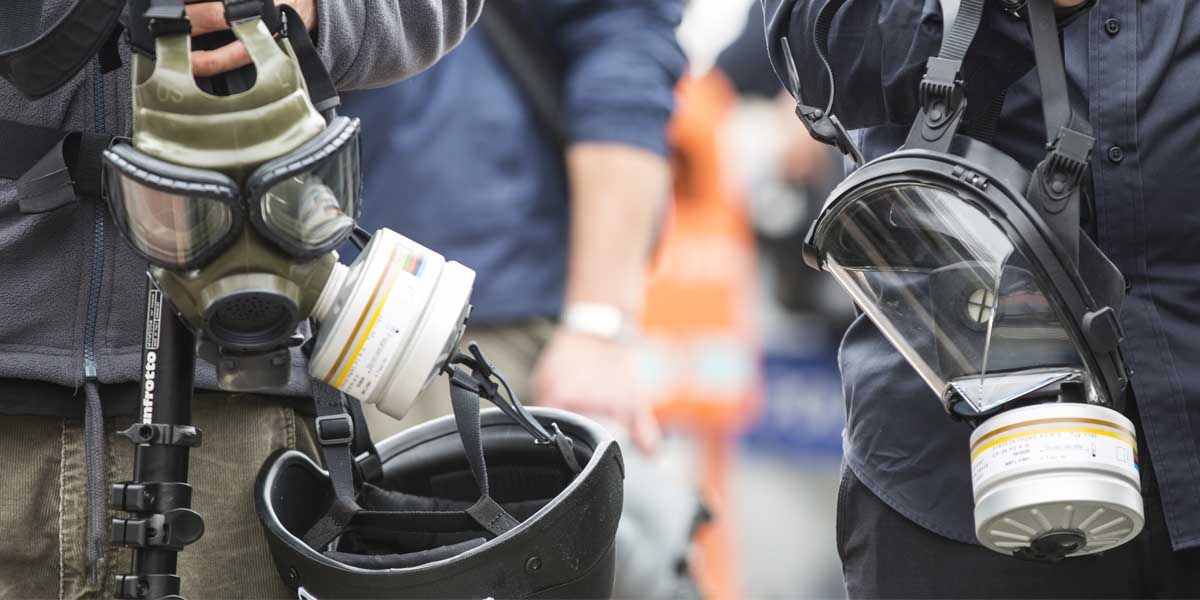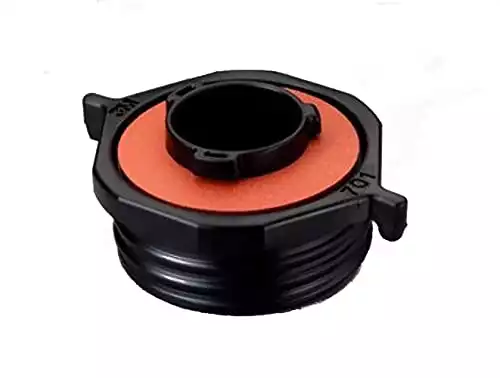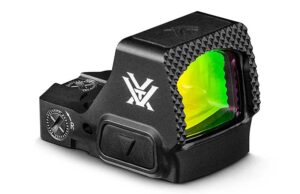Are you looking for a gas mask as part of your disaster prepping? The term gas mask is a bit confusing because it can refer to various types of respirator masks. Here, we will focus on masks to protect you from airborne threats such as chemical vapors or radioactive particles.
We’ll review gas mask options, rating systems, must-have features, and the best gas masks for the average prepper’s needs.
Quick Notes:
- Disposable respirator masks are suitable for many emergencies. Stock up on these before you invest in a gas mask.
- Gas masks are only as good as their filters. Make sure you have lots of compatible filters suited to the threat. See this post on gas mask filters.
- Choose a gas mask that uses 40mm NATO filters, as these are the most common filter type. You can get an adapter for bayonet-type filters on the 40mm masks.
- Only buy certified gas masks. Avoid surplus gas masks.
- Approved gas masks are expensive. Don’t try to save money by choosing generic brands. This is life-saving gear!
Best Options for the Average Prepper
All of the gas masks recommended here have these features:
- 40mm filter threads: These are the most common gas mask filters, so you can use the mask with various filters.
- Passive powered: Meaning they don’t require any electricity
- Certified: By NIOSH and/or EN standards
Best Overall
MIRA Safety CM-6M Tactical Gas Mask
While the Mira CM-6M mask is not cheap, it is much more affordable than other masks offering the same protection and features.
The CM-6M is one of the few civilian gas masks with a CBRN rating and is also rated to EN Class III. Mira is very clear about the shelf life of their products. The lifespan of this mask is 20 years, so you don’t have to worry about it breaking down on you in your bug out bag.
As for features, the drinking tube system is also a big plus. You must buy the canteen as an add-on, but it’s only about $10 more.
There is also a 7M model of this gas mask with dual lenses (bug eyes). It’s slightly easier to store, but we prefer the large visor of the 6M model because it has a larger field of view.
Features:
- NIOSH CBRN rated
- EN Class III
- 20-year shelf life
- 180-degree visor
- Two filter ports
- 6-point harness
- Speech diaphragm
- Drinking tube system
- Compatible with TAPR-M and RVA units
- Made in Czech Republic
- One size (universal) only
- Weighs 20oz
Budget Option
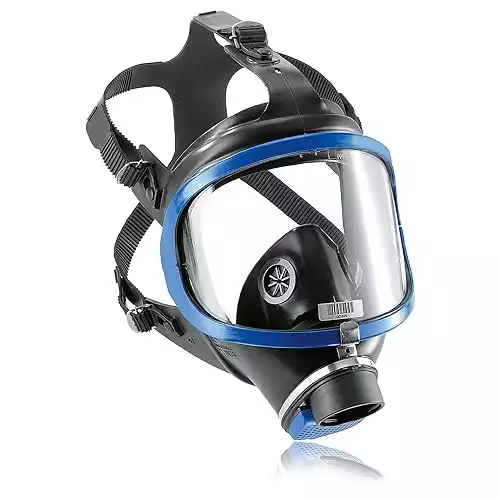
Dräger X-plore 6300 full-face
Drager is one of the most reputable brands of gas masks. They have several models, with this one being one of the more affordable options. It is a fairly basic gas mask rated to EN Class II with just one filter port and no accessories.
Just be warned that the visor is Plexiglas and scratches easily. Don’t just toss it into your bug out bag. You’ll want to wrap it in something, like a shemagh.
Features:
- EN Class II
- 180-degree visor
- One filter port
- 5-point harness
- Made in Germany
- One size (universal) only
- Weighs 17.6oz
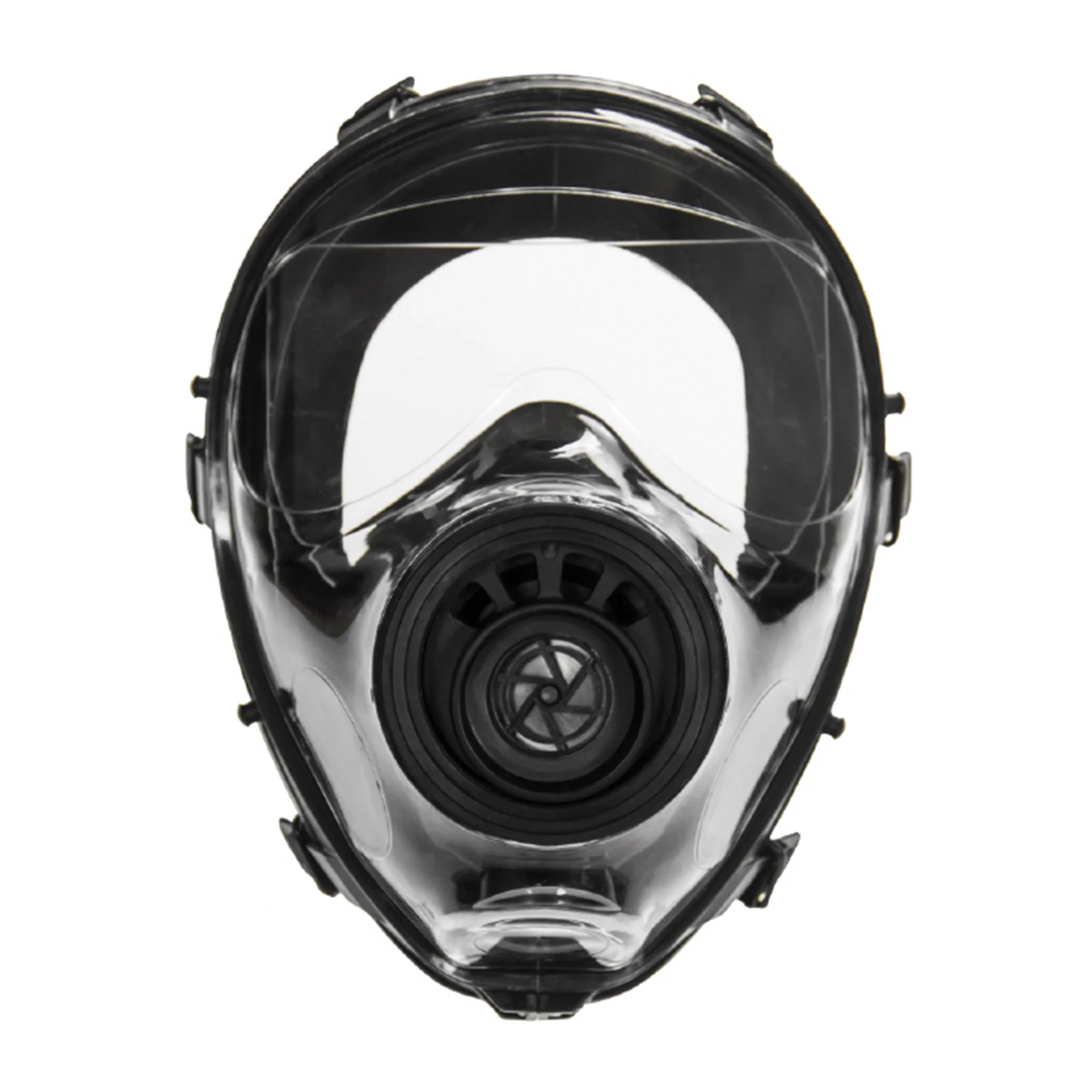
SGE 150 – Heavy Duty, Full Face Respirator Mask
Here’s another affordable gas mask option. The seal is made from a comfortable silicone material with six straps for a good fit. This is also one of the few masks which comes in two sizes.
The filter port is located directly over the mouth area. Some people might find this awkward and bulky. Other people might prefer it over the chin location since you are less likely to bump the filter when looking down. The mask is fairly heavy, though, with the M/L size coming in at over 20oz.
Features:
- EN Category III
- One filter port
- 6-point harness
- Made in Czech Republic
- Two sizes: S/M and M/L
- Weighs 18.7oz (S/M), 20.8oz (M/L)
- Optional PVC hood, speech diaphragm
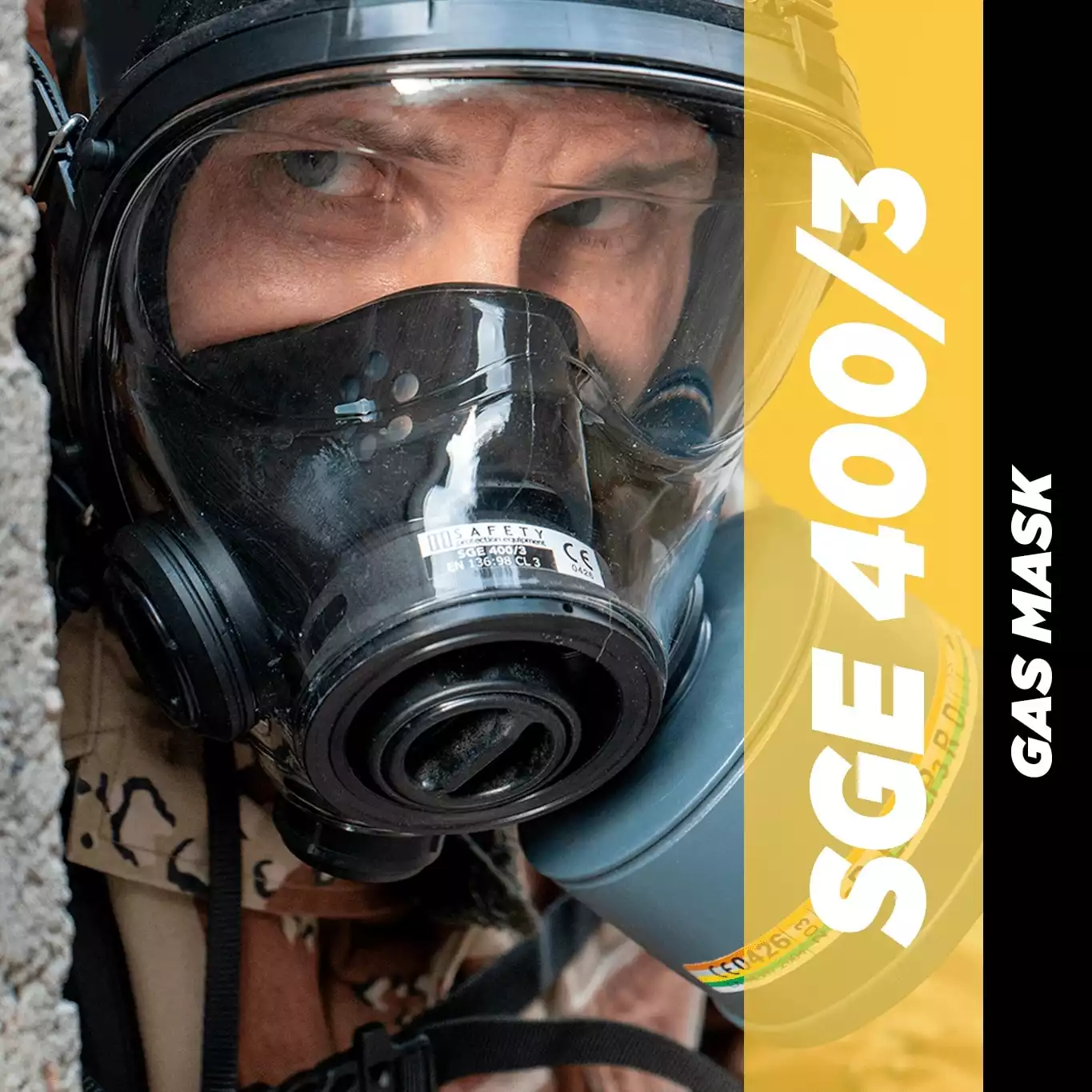
Mestel SGE 400/3
If you need a higher level of protection, the Mestel 400/3 gas mask is NIOSH-rated for NBC. The visor is treated to make it resistant to chemical attacks and mustard gas. Another (more expensive) model of the mask is the SGE 400/3 BB, which is rated to CBRN.
This gas mask has three filter ports, making it convenient for swapping filters or firearm use. It’s one of the more comfortable gas masks and has many optional features.
Features:
- NIOSH NBC
- Three filter ports
- 6-point harness
- Made in Czech Republic
- Two sizes: S/M and M/L
- Weighs 25oz (S/M), 26.4oz (M/L)
- Drinking port
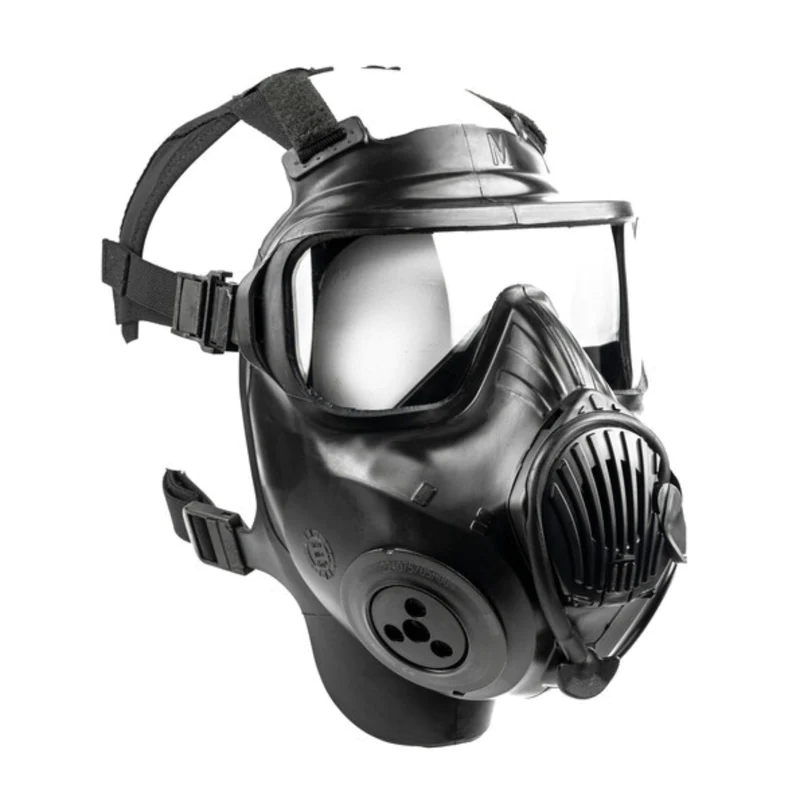
Avon C50
Avon is one of the most reputable brands of gas masks, but most of their masks use their proprietary filters. However, the C50 model uses standard 40mm filters. It is rated for CBRN and meets NATO military requirements.
The C50 is a pricy gas mask. It can also be tricky to find since the government controls its sale. However, it has the benefit of being lighter than other gas masks and comes in three sizes. If you have a small face, this may be your only option.
Features:
- CBRN rated
- Two filter ports
- 6-point harness
- Exhale valve for communication
- Three sizes
- Weighs 17oz
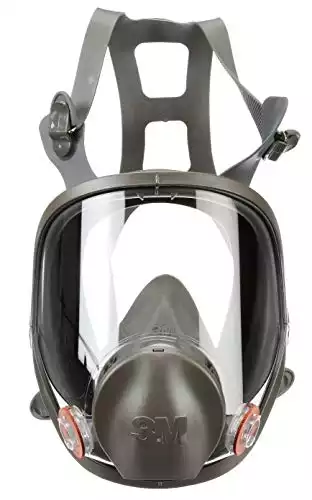
3M Full Facepiece Reusable Respirator 6800
This gas mask was designed for industrial use. However, it is a good choice for disaster prepping, too. The main reason is that it comes with an adapter, so you can use bayonet filters or 3M’s DIN filters. The DIN threads are compatible with 40mm NATO threads, so you can use a wide variety of filters with the mask.
The mask isn’t as comfortable as some others and only has a 4-point harness. But it does come in three sizes, so it is ideal if you have a smaller or larger face.
3M also makes the 7800-S First Responder respirator. It is NBC-rated and also accepts both bayonet and DIN filters. The main drawback is that it is very expensive. There’s also a 7800-B model, which is CBRN-rated but even pricier and hard to find. For basic prepping needs, the 6800 model is fine. If you want a CBRN rating, the Mira mask is a better choice: it’s more affordable and has better features.
Features:
- Two filter ports
- Bayonet and DIN connections
- 4-point harness
- Silicone face seal
- Three sizes
- Compatible with some 3M powered air systems
What about Surplus Gas Masks?
Many people buy surplus military gas masks because they are considerably cheaper. In some situations, we are all for buying secondhand gear, but gas masks aren’t one!
Surplus gas masks can have these problems:
- Fit and Seal Issues: Surplus masks may not provide a secure fit due to wear, aging, or variations in manufacturing standards. A compromised seal can allow contaminants to enter the mask.
- Incompatibility with Modern Threats: Surplus masks may not be designed to protect against contemporary threats, such as newer chemical or biological agents. Using outdated technology may leave individuals vulnerable to evolving hazards.
- Lack of Certification: Approved gas masks undergo rigorous testing and certification processes to ensure their compliance with safety standards. Surplus masks may lack official certification, making verifying their performance and reliability difficult.
- Unknown History: You cannot know whether the mask was exposed to toxins, how it was stored, or whether it is damaged.
- Frauds: The market for gas masks is filled with fraudsters. Your “military surplus” gas mask might be a cheap Chinese costume mask.
Gas Masks vs. Disposable Respirator Masks
Disposable respirator masks, such as N95 or N100, protect against airborne particulates. Think dust, debris, and smoke. They also protect other people from biological particles, such as by containing viruses when you sneeze, but only provide the wearer limited protection from biological particles.
By contrast, a CBRN or NBC-rated gas mask protects against airborne particulates, gases, vapors, and aerosols. Think toxic chemicals used during warfare or biological agents such as viruses. Gas masks can also protect against radiation and nuclear fallout, but the protection will be rather useless if you also have a full Hazmat suit on.
Read our guide to N95 masks.
Do You Need a Gas Mask?
You do NOT need a gas mask in the most common disaster scenarios. Instead, a cheap disposable N95 mask should be adequate. The N100 masks offer even better protection and aren’t much more expensive.
For example, it’s common for hazardous construction materials to get in the air after an earthquake, tornado, or hurricane. Wearing an N95 mask will prevent you from breathing in these materials. A gas mask would be overkill.
However, there are some disaster situations where you would need a gas mask – and not having one would be deadly.
You may need a gas mask in these scenarios:
- Attending protests or riots: Tear gas is often deployed.
- Industrial or chemical plant leaks: Leaks can occur during accidents or when the plant is damaged during natural disasters.
- Terrorist attack or warfare: If a chemical or biological agent was used
- Pandemic: A gas mask can protect you from breathing in airborne viruses and bacteria.
- Nuclear attack or accident: The mask only protects you from breathing in the radioactive particles. You’ll need a Hazmat suit to protect your skin.
The bottom line? A gas mask is for rare but deadly situations. First, ensure you are ready for more common disasters by stocking up on basic supplies and disposable N95 or N100 masks. Only then should you consider investing in a gas mask.
Recommended Disposable Mask
How to Choose a Gas Mask
Approvals
Gas masks are tested to show that they protect against specific threats. The two main approvals are the National Institute for Occupational Health and Safety (NIOSH) and the EN Standards.
Only buy gas masks that carry one of these approvals!
There are a lot of unapproved gas masks for sale on places like eBay. There are many ways to save money on disaster prepping supplies, but buying a cheap gas mask shouldn’t be one. Don’t trust your life to unapproved cheap gear.
Mask Ratings and Standards
Approved gas masks have ratings. These standardized measures indicate the level of protection a particular respiratory protection device can provide against various airborne contaminants.
Gas mask ratings are incredibly confusing. Different regions and organizations have their own standards and classifications. Some of the ratings – such as CBRN approval – are optional. A lot of manufacturers don’t bother paying for the inspection process.
The NIOSH and EN ratings are the main ones you will find.
NIOSH Ratings:
NIOSH certification is given to the mask and filter as a unit.
- CBA/RCA: Rated for Chemical and Biological agents and Riot Control agents. They are most commonly used for riot control agents such as CS gas or tear gas.
- NBC: Rated for Nuclear (such as radioactive particles), Biological (such as viruses and toxins), and Chemical threats (such as toxic gases or vapors).
- CBRN: This has largely replaced NBC. It is also rated for Nuclear, Biological and Chemical threats but also has extra protection against radioactive isotopes.
For more details about the NIOSH rating system, see this guide by the CDC.
EN Standards
EN Standard 136 deals with the requirements for full-face masks (there is a different standard for mask filters). EN 136 masks are divided into three classes:
- Class 1: Protection against some organic, inorganic and acidic gases and vapors, ammonia, and amine derivatives and particles.
- Class 2: All of the protection of Class 1 with higher capacity for filtering out gases and vapors.
- Class 3: Highest level of protection and suitable for demanding environments with high amounts of hazardous substances.
Important Note: These NIOSH and EN ratings only refer to how well the mask protects against threats, such as not allowing gases to pass through. A CBRN mask, for example, must be made out of materials that won’t break down when exposed to radiation.
But the filter and NOT the mask prevents you from breathing in the threat. For example, you won’t get CBRN protection if you use an N95-rated filter on a CBRN mask.
Coverage
Gas masks can be broken down by how much coverage they provide:
- Half face
- Full face
- Full hood
We recommend getting a full-face gas mask because it also protects the eyes. If you are in a situation where you only need a half-face mask, then a disposable N95 or N100 mask is probably adequate.
There are some exceptions, though.
People with glasses cannot wear full-face gas masks. The part of the glasses that goes over your ears will break the seal on the mask. Some brands sell eyeglass inserts for their full masks, but you might opt for a half-face mask and goggles instead or a full hood.
Children and people with facial hair will need a full-hood gas mask because the half and full-face masks don’t provide a secure fit.
Mestel sells an affordable eyeglass insert for gas masks.
Filter Compatibility
A gas mask is only as good as the filter it uses. Filters can be expensive, and they expire, so you need to pay attention to which types of filters the gas mask can use.
We recommend getting a gas mask with a 40mm NATO thread (also called 40rd). This is a common type of filter, so your mask can accept multiple filters. Avoid gas masks that use proprietary filters. The filters tend to be expensive, and finding replacements – especially in a SHTF situation – will be difficult, if not impossible.
The 3M brand’s DIN threads are compatible with 40MM NATO threads, which is also a good option.
Pro Tip:
Get a 40mm-to-bayonet filter adapter. This will let you use cheap bayonet-type filters on a 40mm gas mask. Unfortunately, no reverse adapter lets you use 40mm filters on a bayonet-type mask.
Number and Position of Filter Ports
Gas masks typically have one or two filter ports. The ports are either in the center around the chin area or by the cheeks.
Having multiple ports is a nice feature to have. The main benefit is changing cartridges while keeping the other one in place. People with breathing problems will also want this feature because it’s easier to breathe with two cartridges in place.
Finally, if you plan on using a firearm while wearing your gas mask, you’ll appreciate that you can set the cartridge position so it doesn’t interfere with your sight.
Visor Type
Older gas masks had two individual eyeholes. This made them easier to fold. Most gas masks today, though, have a single visor. The single visor provides better visibility. Because the newer materials are flexible, you can still store the gas mask without it breaking.
Fit
A gas mask only works if it fits securely against your face to create an airtight seal. You can test the fit with a “negative pressure test.” To do this, you cover the filter with your hands and inhale deeply. You should feel the gas mask tighten against your face.
Unfortunately, most gas masks only come in a “universal” size. You may have trouble finding a gas mask that fits you well if you have a small or large face.
Other Gas Mask Features
Some gas masks have additional features or add-ons. Most disaster preppers do NOT need these features. But, if the choice is between two gas masks, you might choose one with these features.
- Drinking tube
- Speaking port/voice emitter
- Electronic communication hookup







